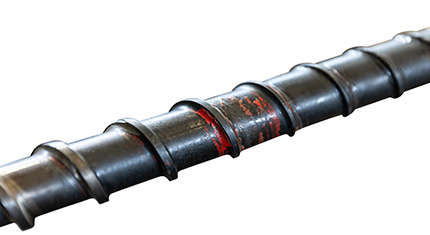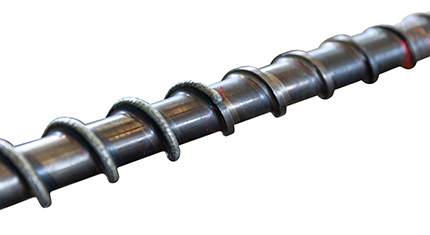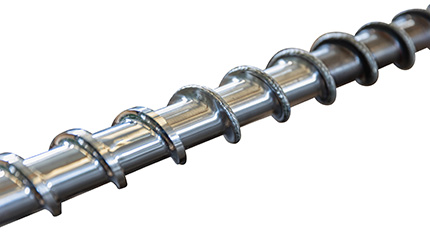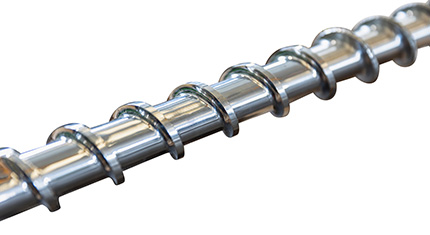Home » Regeneration
Regeneration
Regenerating plasticizing screws and barrels is a crucial step for restoring the original performance of components by addressing damaged or worn parts.
Regeneration offers several advantages compared to purchasing new components:
- Lower Cost: Regenerating a screw or barrel is less expensive than buying a new one.
- Reduced Downtime: Regenerating a screw or barrel takes significantly less time compared to manufacturing and delivering new products, thus reducing machine downtime.
- Know-How: By taking advantage of regeneration, our technicians, along with yours, can analyze the wear patterns of the components and, through dedicated testing, also examine the polymers actually processed. This provides a deeper understanding of the internal workings of the entire plasticizing unit, which is extremely useful for diagnosing and preventing future problems and optimizing machine efficiency.
Often, only the screw is regenerated – and not the entire group – due to its quicker disassembly compared to the entire unit. While this is a fast solution, it is partial: it is always advisable to also check the wear condition of the barrel. In cases of significant wear, regenerating both the screw and the barrel simultaneously is recommended to ensure that diameters and tolerances match accurately.
Regeneration phases

Preliminary assessment
Screws and barrels are removed from the machine (by the customer), then the screw is extracted from the barrel and both components are cleaned of material residues. This allows for inspection to identify and quantify any damage, wear, and/or deformations. This initial inspection is generally visual and aims primarily to assess whether the components can be regenerated.

Cleaning
If regeneration is deemed feasible (the wear is not extreme or irreparable, and the associated cost is acceptable), the parts are thoroughly cleaned to remove all plastic residues, carbonization, or other impurities.

Repair and finishing
Damage (wear, corrosion, abrasion) is repaired through interventions such as grinding, welding buildup, and specific thermal treatments. After repairing the damaged parts, the entire working surface of the screws and barrels is finished and polished.

Assembly and testing
Once the regeneration is complete, screws and barrels undergo final inspection and testing, and are then ready to be assembled and tested.


